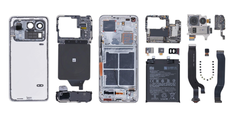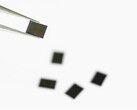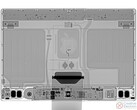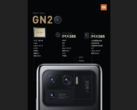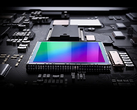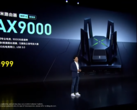The Mi 11 Ultra has already been disassembled on camera, albeit not by JerryRigEverything. Instead, XYZone has shown the Mi 11 Ultra from the inside, including its new cooling system. Xiaomi is expected to launch the Mi 11 Ultra globally though, so it will probably not be long before other teardown videos hit YouTube.
XYZone also compares the Mi 11 Ultra's cameras with recent Huawei and Samsung flagships, but we will focus on the teardown elements in this article. Nonetheless, it is interesting to see how the Mi 11 Ultra and its new ISOCELL GN2 sensor compares against the P40 Pro Plus and the Galaxy S21 Ultra.
Unsurprisingly, you will need some tools to get at the Mi 11 Ultra's insides, accessible by removing the glass back. It turns out that Xiaomi has built the secondary display into the camera array, rather than leaving an aperture for it as it does with the device's cameras. Xiaomi connects the display to the motherboard via a ribbon cable, which adds another element of danger when removing the back panel.
XYZone's video shows just how large the ISOCELL GN2 is too, with Samsung's new sensor dwarfing the Sony IMX586 sensors that Xiaomi uses for the other two rear-facing cameras. All cameras are bonded to the same chassis though, which makes them tricky to replace.
Thankfully, Xiaomi has included a large battery pull tab, a feature that should be included in every smartphone, in our opinion. The Mi 11 Ultra's cooling system looks like its predecessors though, contrary to Xiaomi's marketing claims.
Based on XYZone's video, Xiaomi has included copper and graphite pads, some thermal paste and a vapour chamber; nothing earth-shattering. Hopefully, Xiaomi has taken greater care with the cooling system than it did with the one in the Mi 11, which could not handle the Snapdragon 888 well in our stress tests. XYZone's short gaming test indicates that the Mi 11 Ultra may keep the Snapdragon 888 in check, but we would reserve judgement until we get our hands on one.




